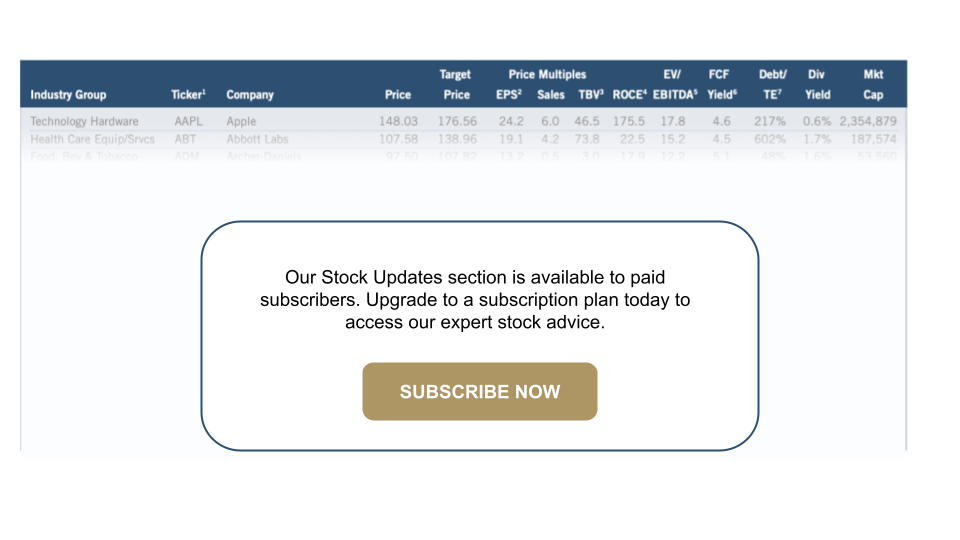The Prudent Speculator Weekly Commentary is expertly curated every week as a valuable resource for stock market news, investing tips, business insights, and economic trends as it relates to value stock investing. This week, we cover the AAII sentiment, GDP outlook, Jerome H. Powell’s Q&A, perspective on historical equity returns, high inflation, valuations and more. We also include a short preview of our specific stock picks for the week; the entire list is available only to our community of loyal subscribers.
| Subscribe to The Prudent Speculator |
Executive Summary
- Week in Review: Stocks Take a Breather
- Fading Optimism?: Bullish Sentiment Rises, CNNMoney in Greed Territory & Consumer Sentiment Climbs
- Econ Numbers: Q1 GDP Outlook Improves; Jobs Market Remains Strong
- Powell Q&A: Early Stages of Disinflation but More Fed Rate Hikes Likely
- Patience: The Longer the Hold, the Less the Chance of Loss
- Fed Tightening & High Inflation: Historical Equity Return Perspective
- Valuations: Inexpensive Metrics for our Portfolios
- Corporate Profits: Solid Q4 EPS and Decent Outlook for 2023
- Stock News: We offer updates on 14 stocks across 7 sectors
Week In Review: Stocks Take a Breather
With the equity markets heading south last week,

…we were reminded again that selloffs, downturns, pullbacks, corrections and even Bear Markets are events that stock investors always have had to endure on their way to the best long-term performance of any of the financial asset classes.

Fading Optimism?: Bullish Sentiment Rises, CNNMoney in Greed Territory & Consumer Sentiment Climbs
Warren Buffet states, “The fact that people will be full of greed, fear or folly is predictable. The sequence is not predictable.” Of course, we can never be sure what short-term-oriented investors are full of as the front page of The Wall Street Journal on Saturday proclaimed, “Markets Pull Back As Optimism Fades.”
We suppose that sounds reasonable to describe the week’s trading, except that the latest Bull-Bear Sentiment from the AAII saw enthusiasm among individual investors about the short-term direction of the stock market jump to its highest level in more than a year. Indeed, the number of Bulls hit 37.5%, the greatest tally since December 30, 2021, though the reading was merely in line with the historical norm on the 36-year-old contrarian indicator.

Further challenging the “Fading Optimism” WSJ assertion, the CNNMoney Fear & Greed Index is now deep into the Greed zone, though not as heavily as at the end of the week prior. Only Junk Bond Demand (Fear) and Market Volatility (Neutral) are not in Greed territory of the seven Fear & Greed Indicators, with Stock Price Strength, Stock Price Breadth, Put and Call Options, and Safe Haven Demand all signaling Extreme Greed.

Finally, the latest measure of consumer sentiment from the Univ. of Michigan hit 66.4, up from 64.9 the month prior and better than estimates. True, the gauge is well below average, so folks are hardly euphoric, but the survey set a 13-month high this month.
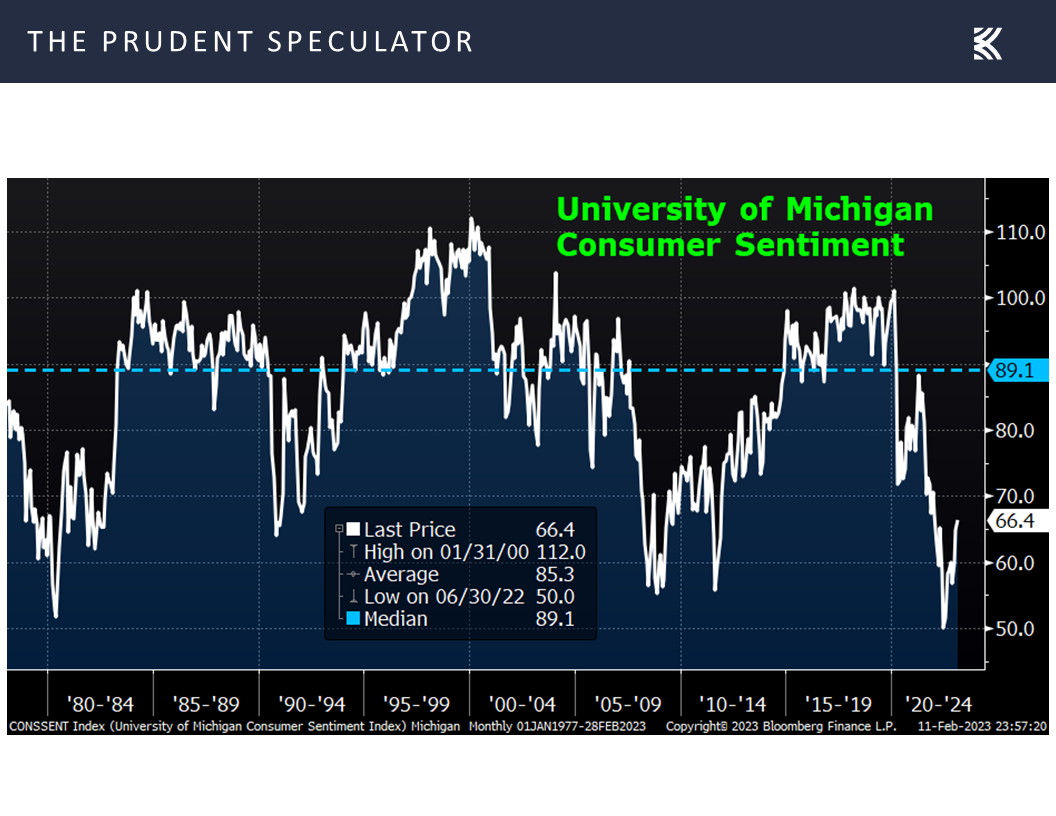
Econ Numbers: Q1 GDP Outlook Improves; Jobs Market Remains Strong
As strange as it might sound, some are concerned that the economic data is too strong, as the most recent projection for Q1 U.S. GDP growth from the Atlanta Fed rose to 2.2% last week, up from 0.7% the week prior.

The labor market continues to be extraordinarily resilient, with the latest numbers on first-time filings for jobless benefits and continuing jobless claims not far off historically low levels last seen in 1969 when the workforce was much smaller than it is today.

Powell Q&A: Early Stages of Disinflation but More Fed Rate Hikes Likely
Federal Reserve Chair Jerome H. Powell commented last week on the blowout January jobs number, saying it was “certainly strong—stronger than anyone I know expected. It kind of shows you why we think this will be a process that takes a significant period of time.”
Interestingly, stocks initially rallied in the wake of those and other comments the Chair made at a Q&A session at the Economic Club of Washington, D.C., as Mr. Powell reminded that we are in “the very early stages of disinflation.” However, upon further reflection, traders evidently decided that the Fed would remain hawkish in continuing to raise interest rates, as the Fed Funds futures saw an increase in the projection for the peak rate this summer to 5.19%.
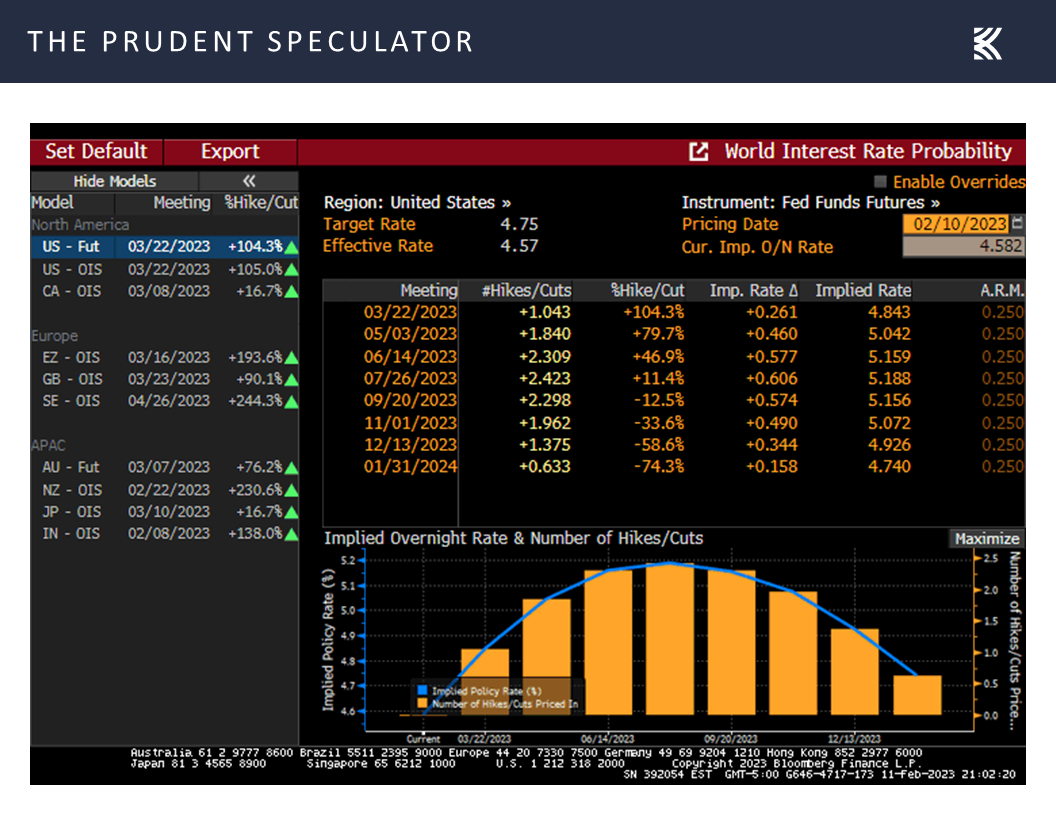
While the futures are still suggesting a lower year-end Fed Funds rate than was included in December’s FOMC projections, the market is now much more closely aligned with the Fed,
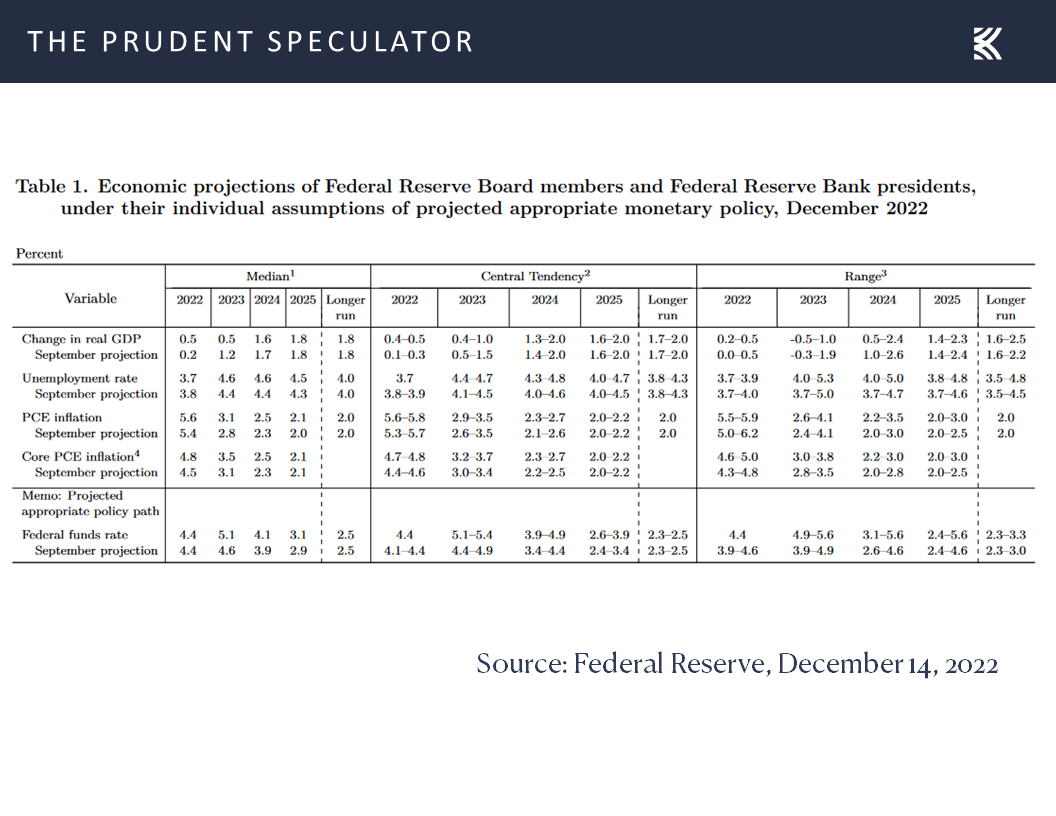
which suggested that real GDP growth for 2023 would be 0.5%, arguably contradicting the current 65% odds of recession this year as tabulated by Bloomberg.

Chair Powell concluded last week, “There has been an expectation that it [inflation] will go away quickly and painlessly — and I don’t think that’s at all guaranteed; that’s not the base case. The base case for me is that it will take some time, and we’ll have to do more rate increases, and then we’ll have to look around and see whether we’ve done enough.”
Patience: The Longer the Hold, the Less the Chance of Loss
Given that there really is no way anyone can consistently predict how the equity markets will react in the near term to incoming economic data and Fed proclamations, we offer the friendly reminder that time in the market trumps market timing.

Most folks are investing for long-term objectives, so we remain puzzled that so many continue to think about risk in terms of volatility of one-month returns. After all, while there is no assurance that past is prologue, the odds of losing money in Value Stocks or Dividend Payers is far lower over three-, five- and 10-year periods.
We also note that seven decades of returns data show that stocks in general have performed well on average, both concurrent with and subsequent to increases (as well as decreases) in the Fed Funds rate over 3-, 6-, and 12-month time spans, with Value Stocks leading the charge no matter the direction.

Fed Tightening & High Inflation: Historical Equity Returns Perspective
Yes, we realize that Chair Powell & Co. continue to talk tough in inflation, but longer-term inflation expectations still appear to be well anchored. The New York Fed’s latest Survey of Consumer Expectations saw the three-year projection hold steady at 3.0%. The Univ. of Michigan’s one-year inflation outlook bumped up to 4.2% in February versus 3.9% in January and the current rate of 6.5%, but the five-year outlook was unchanged at 2.9%.

And we can’t forget what happened during the Paul Volcker years, the last time a Fed Chair had to tackle extreme levels of inflation. As Vox.com wrote:
The approach took two tries to get its intended effect. Volcker’s tightening slowed economic activity enough that by January 1980, the U.S. was in recession. But Fed interest rates actually began falling sharply after April, which limited the effectiveness of the Fed’s anti-inflation efforts. The Fed tightened again after that and sparked another recession in July 1981. This one was far worse than the first; while unemployment peaked at 7.8 percent during the 1980 recession, it would peak at 10.8 percent in December 1982 in the middle of the 16-month second Volcker recession. That’s a higher level than at the peak of the Great Recession in 2009. Over the course of the 1980s, this policy regime would become known as the “Volcker shock.”
If only we could have another Volcker Shock in the equity markets!
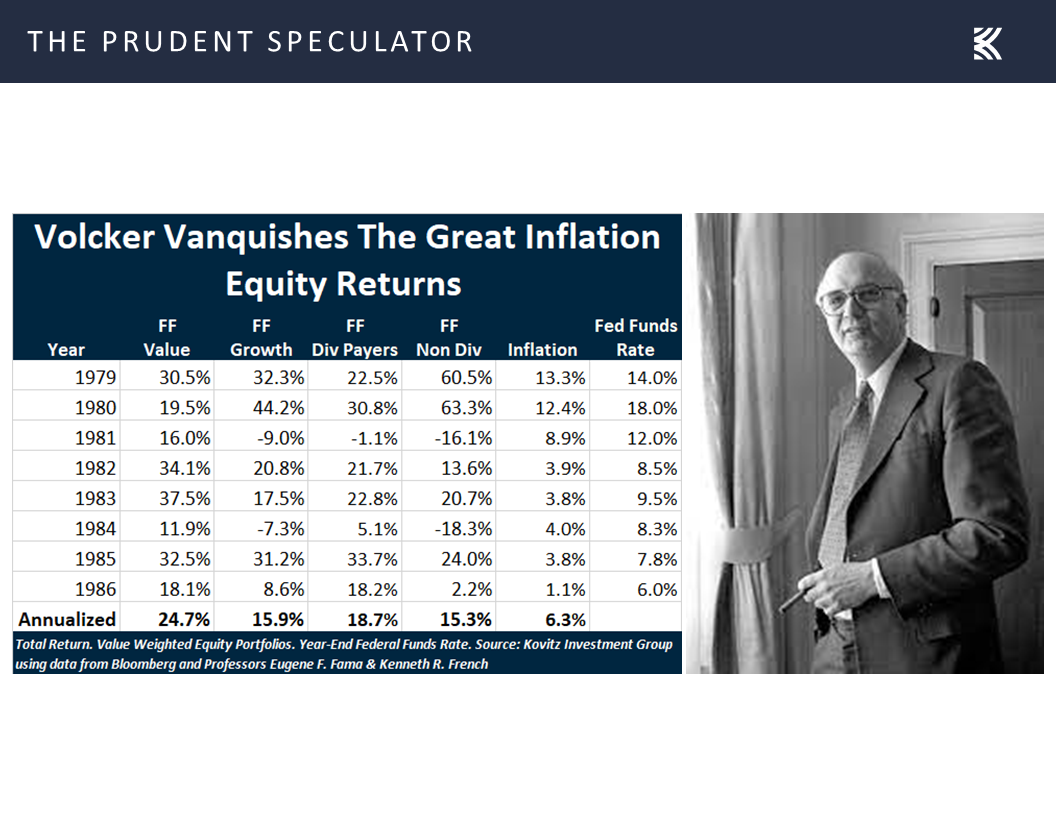
Valuations: Inexpensive Metrics for our Portfolios
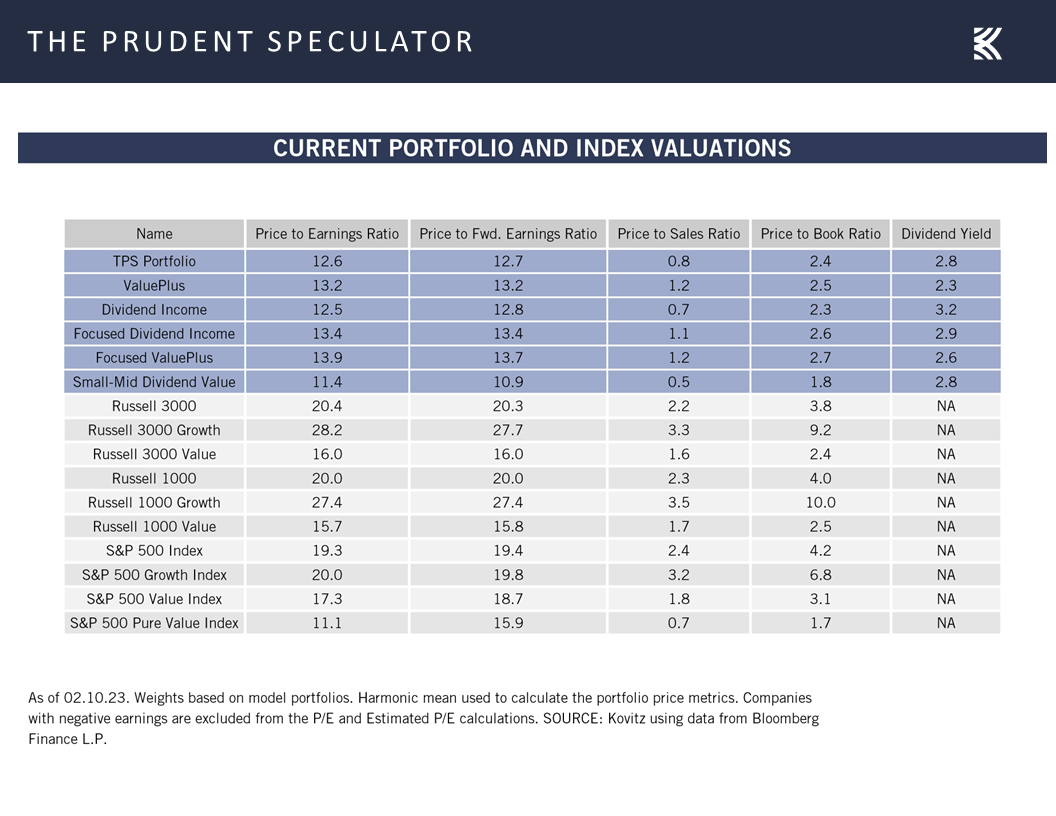
To be sure, history is merely a guide and never the gospel, so anything can happen and we must always be braced for downside volatility. However, we see no reason to alter our optimism for the long-term prospects of our broadly diversified portfolios of what we believe to be undervalued stocks. Not only do we think the financial metrics on our portfolios are attractive,
Corporate Profits: Solid Q4 EPS and Decent Outlook for 2023
but we continue to believe that even a mild recession would not put a big dent in corporate profits. We are now about 70% through fourth quarter earnings season and despite those who argue that results have been disappointing, the numbers have been OK, even as outlooks continued to be subdued and stock prices sometimes have reacted negatively. For the S&P 500, 69.2% of companies have beaten EPS expectations and 55.2% have exceeded revenue forecasts, while present projections call for decent growth this year.
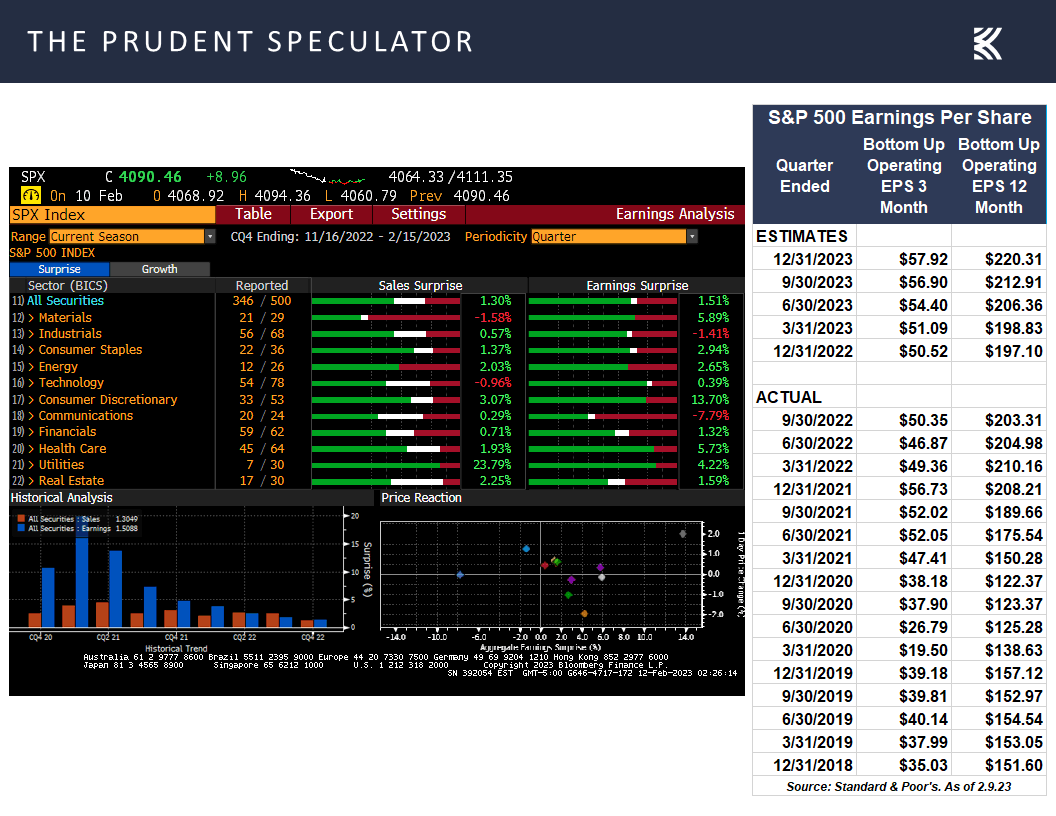
Stock Updates: We offer updates on 14 stocks across 7 sectors
The team of analysts at Kovitz take a look at earnings reports and other market-moving news of note out last week for several of our recommendations. Keeping in mind that all stocks are rated as a “Buy” until such time as they are a “Sell,” a list of all current recommendations is available for subscribers only via the following link: https://theprudentspeculator.com/dashboard/. We also offer the reminder that any sales we make for our newsletter strategies are announced to our subscriber list via our Sales Alerts.

